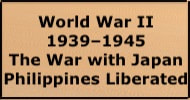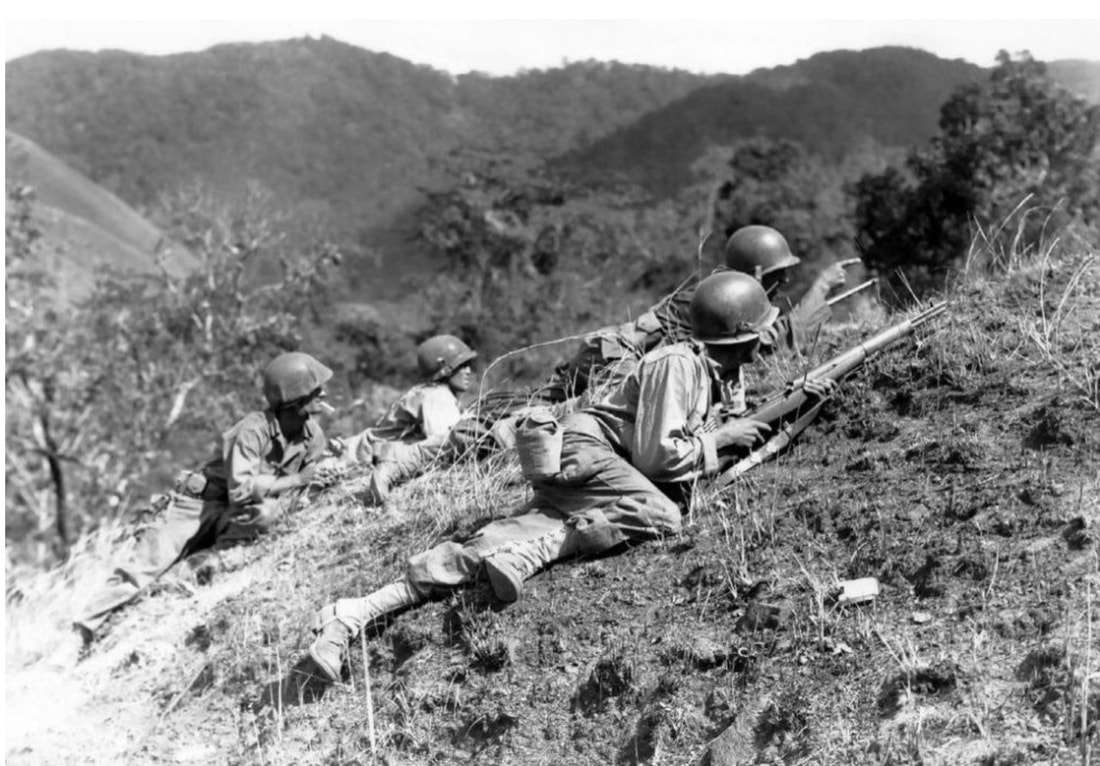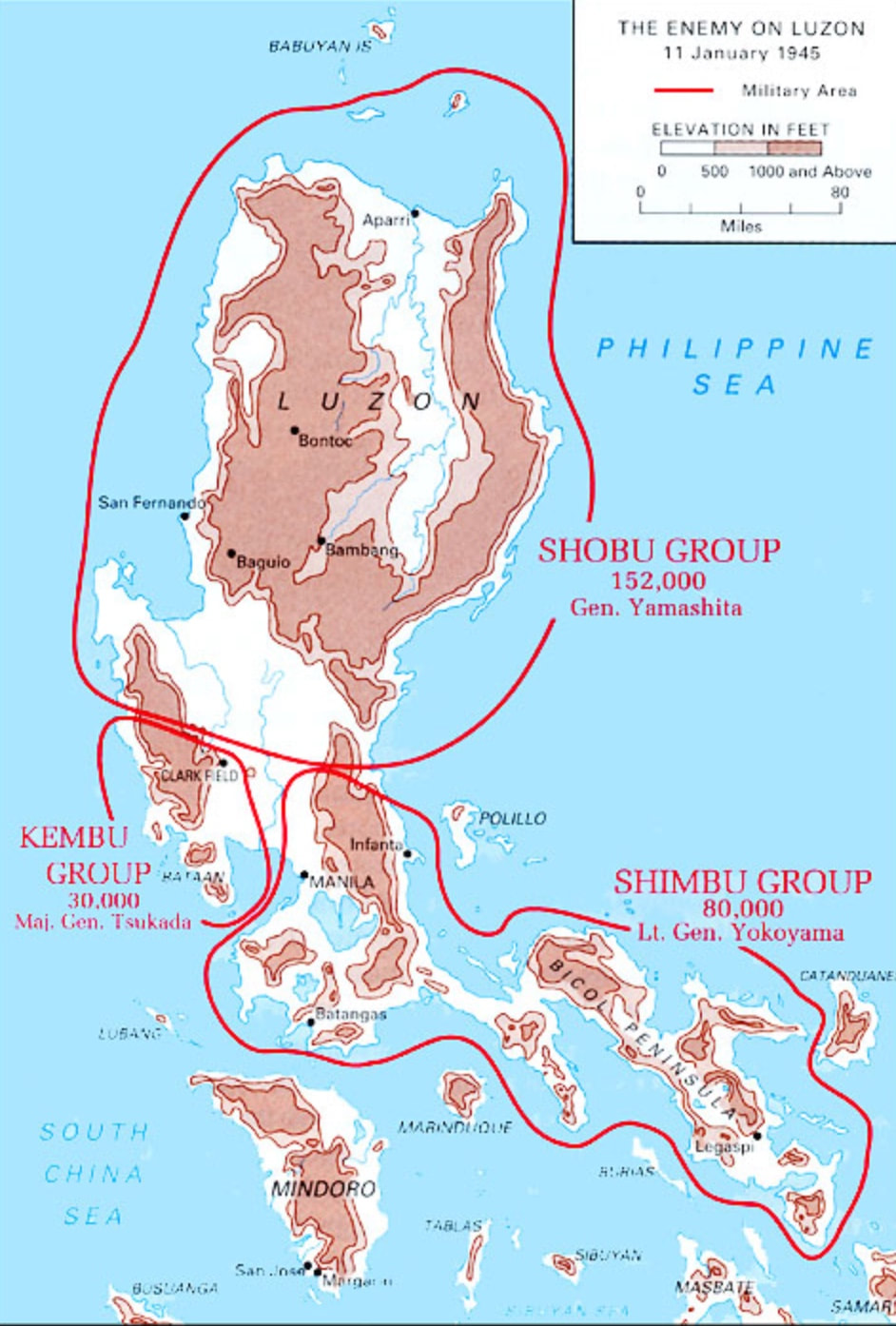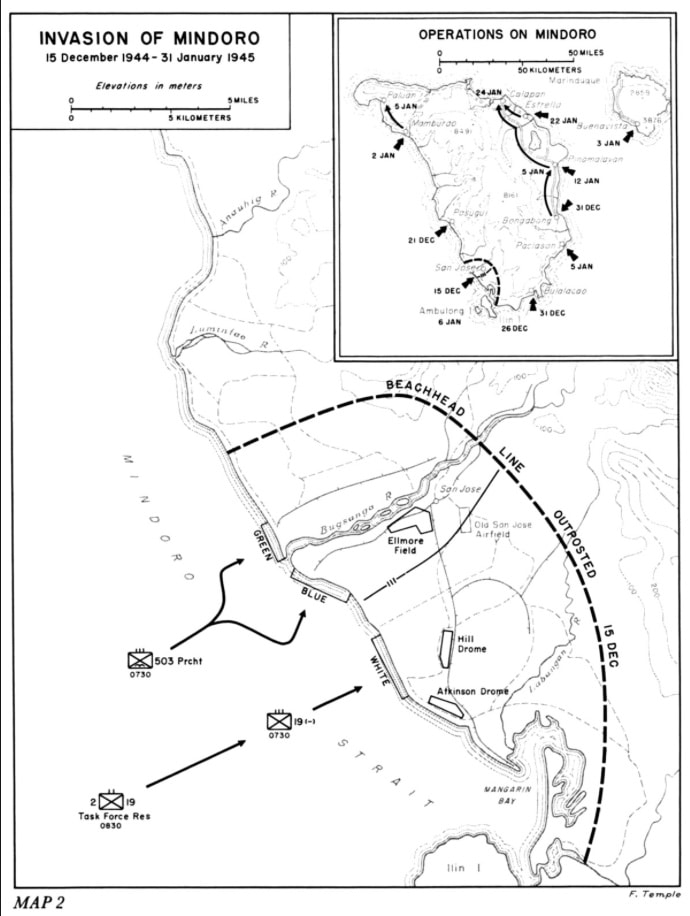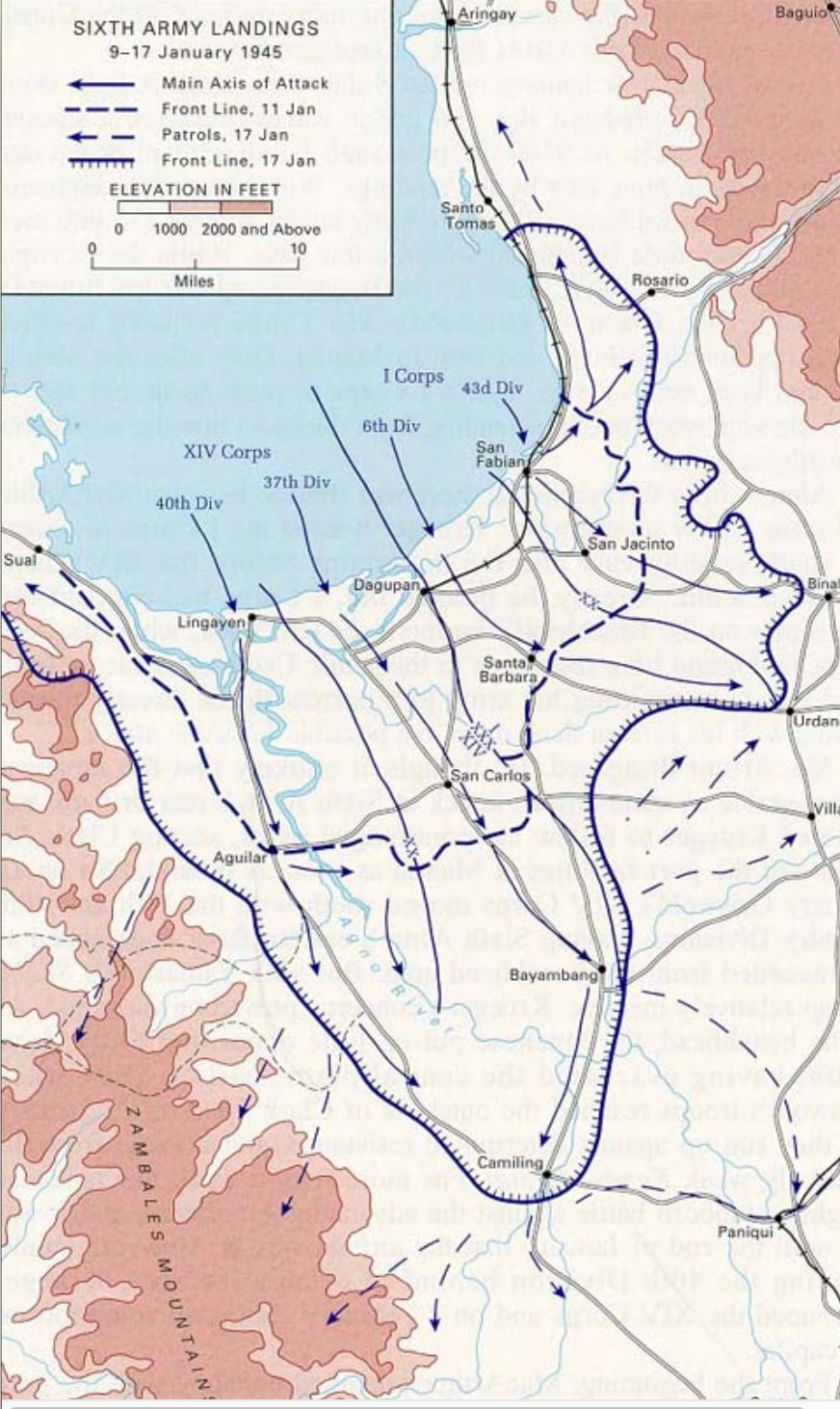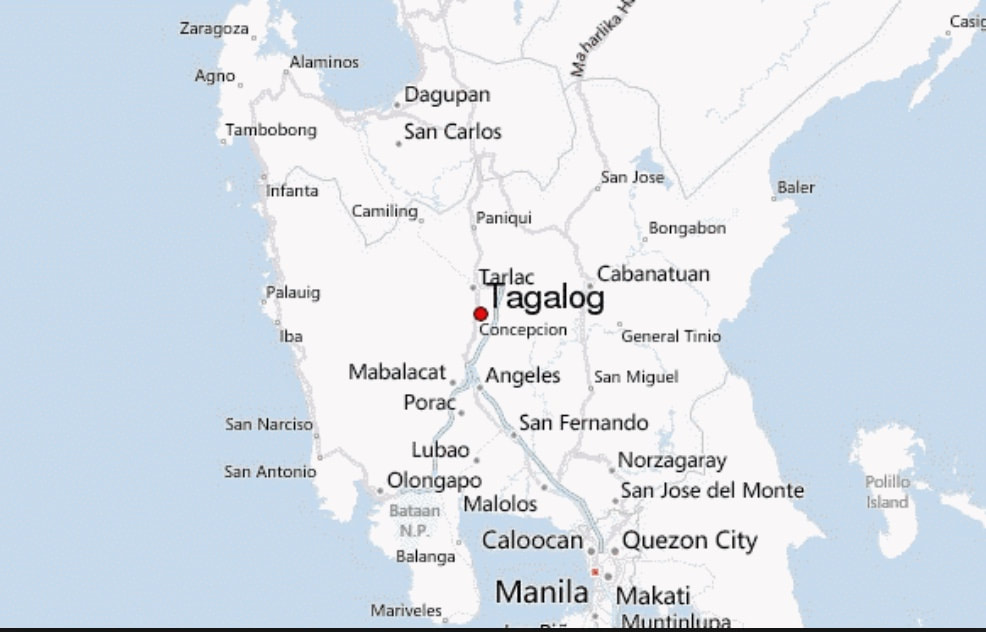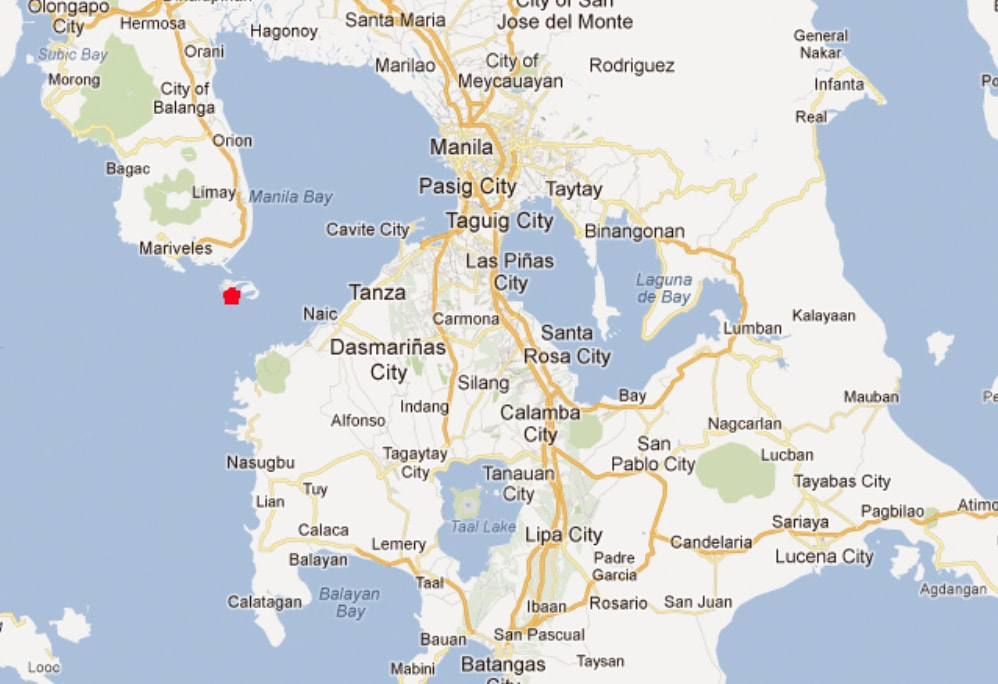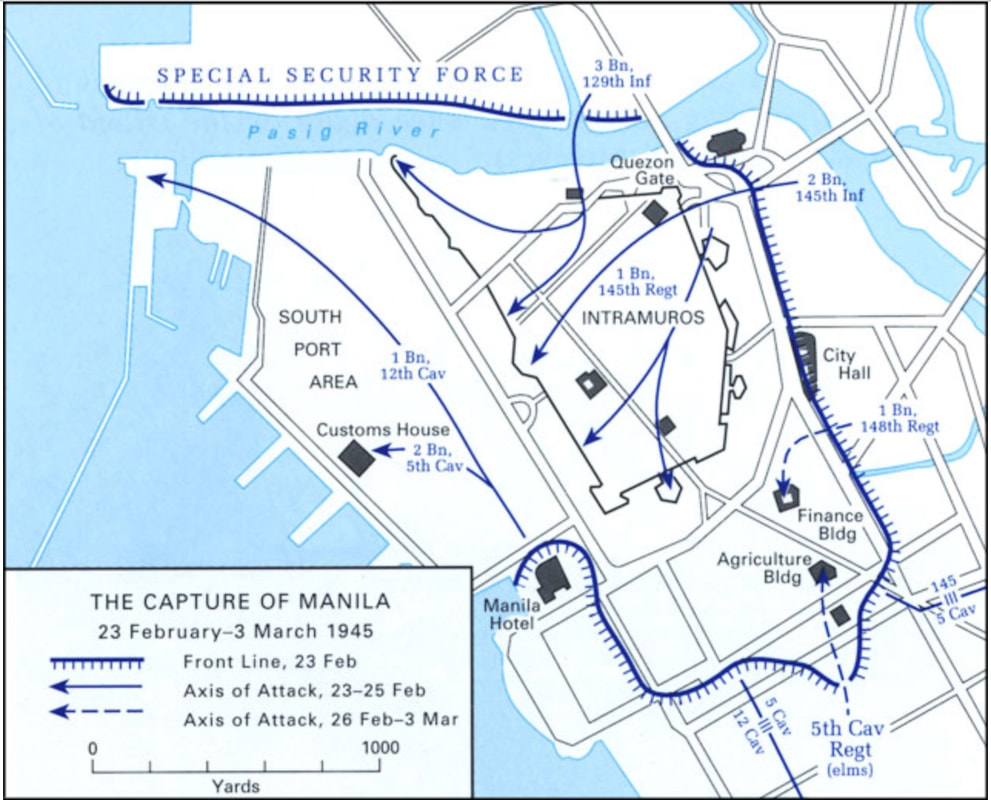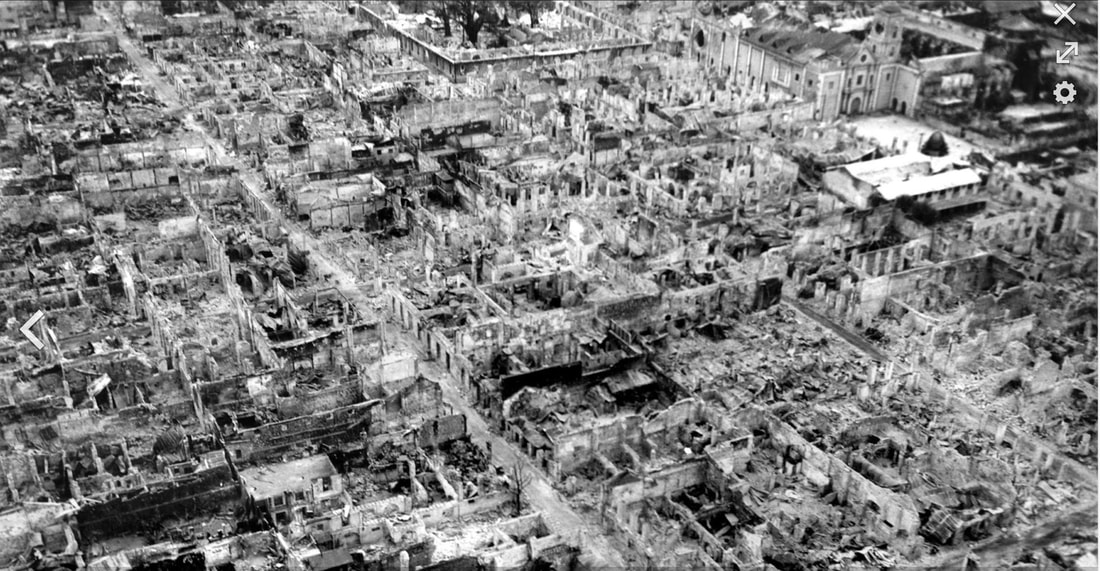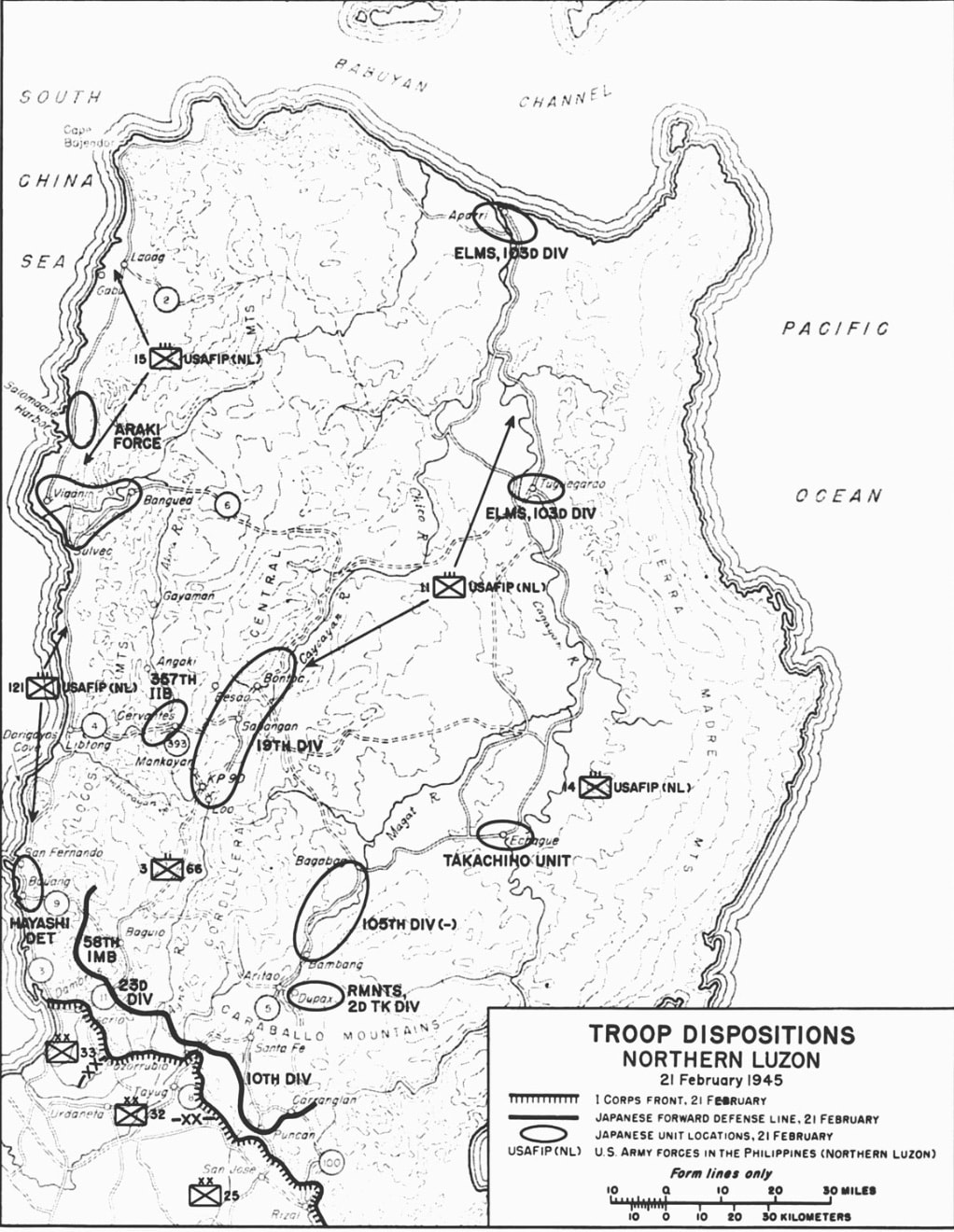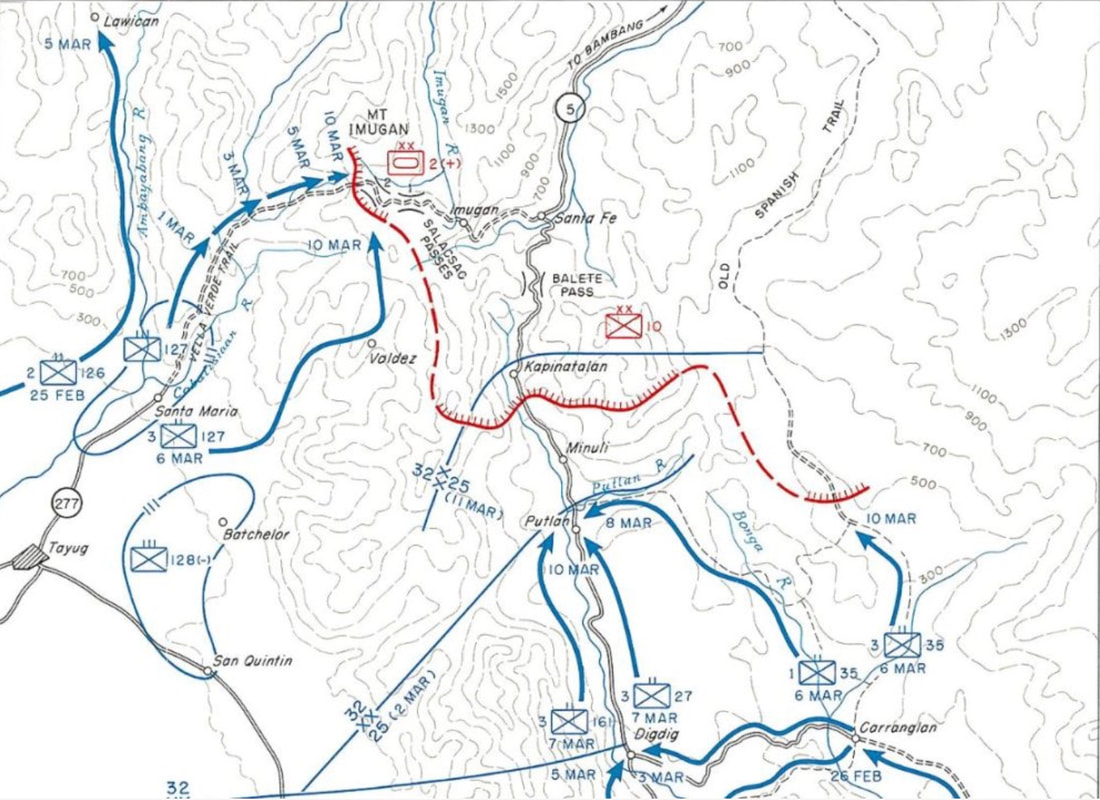bigpigeon.us webpage WWII Japan > Philippines Liberated > Luzon, © 2024 by Robert A. Christiansen, updated by RAC 23 Mar 2024.
The long and deadly Luzon Campaign cost the lives of over 8,000 US personnel.
The long and deadly Luzon Campaign cost the lives of over 8,000 US personnel.
|
Luzon is the largest and most northerly of the Philippine Islands. It also contains the Philippines capital, Manila, and one of the finest harbors in the world, Manila Bay.
When United States forces invaded Luzon in January 1945, they faced enemy ground forces larger than previously encountered in the War with Japan. Fortunately, by now both Japanese sea and air power, except for kamikazes, had been largely eliminated. Nevertheless, American casualties on Luzon were high. The most important areas were seized within the first few months, but combat in rural areas was still ongoing when the War with Japan ended in August 1945. Two notable chapters from the lengthy Luzon campaign:
|
Mindoro
|
Luzon campaign preliminaries began on 15 December 1944, when United States forces invaded the island of Mindoro south of central Luzon in order to acquire airfields for subsequent use.
As the accompanying map shows, the Mindoro invasion achieved its goals on the first day by securing a corner of the island containing the airfield locations. |
The Invasion of Luzon - 9 January 1945
|
In January 1945, MacArthur's Sixth Army landed at Lingayen Gulf on the coast of Luzon north of Manila. Over three years earlier, in December 1941, Lingayen Gulf was also the site of the major Japanese invasion of the Philippines.
The Sixth Army quickly pushed south until stopped on 23 January by stiffening Japanese resistance in the area of Clark Field. (Clark Field is south of Tarlac and northeast of Subic Bay on the following map.) Combat in the Clark Field area held up the Sixth Army advance for a week, until on 1 February the advance towards Manila continued. |
The Approach to Manila
The primary objectives in the Luzon campaign were Manila Bay and the city of Manila. This area, a mere 1,500 miles south of the Japanese Home Islands, was viewed as major staging area for the planned later invasion of Japan.
A secondary, humanitarian objective was the rescue of the thousands of civilian internees and military prisoners of war, mostly American, held at various camps in central Luzon. Japanese forces had already executed en masse American captives on at least two occasions, civilians on Wake Island and military on Palawan, and further atrocities were feared.
A secondary, humanitarian objective was the rescue of the thousands of civilian internees and military prisoners of war, mostly American, held at various camps in central Luzon. Japanese forces had already executed en masse American captives on at least two occasions, civilians on Wake Island and military on Palawan, and further atrocities were feared.
|
29 Jan - Amphibious landing by the 34th Regimental Combat Team of the 8th Army's 24th Infantry Division at San Antonio west of Subic Bay. This force then advanced to the southeast and liberated Olongapo in Subic Bay on.
29 Jan - Amphibious landing by elements of the 8th Army's 11th Airborne Division at Nasugbu southwest of Manila. 30 Jan - Cabanatuan POW camp raid by Filipino guerillas and elements of the 6th Ranger Battalion and Alamo Scouts free 500 prisoners. Cabanatuan is east of Tagalog on the first map. (The Alamo Scouts were the 6th Army's special operations unit.) 3 Feb - US Army liberates civilian internment camp at Santo Tomas University in northern Manila, freeing 3,785 prisoners. 3 Feb - Airborne landing by elements of the 11th Airborne Division at Tagatay Ridge south of Manila reinforces the amphibious landing of 29 January. 3-5 Feb - Liberation of internees in Old Bilibad Prison in Manila. 23 Feb - Los Banos prison raid about 25 miles southeast of Manila by Filipino guerillas and elements of the 11th Airborne Division; 2,147 prisoners rescued. Japanese later kill 1,500 Filipinos in retalitation |
The Battle of Manila 3 February - 3 March 1945
|
Before this battle, Manila was known as the Pearl of the Orient.
General Yamashita, the overall Japanese commander in the Philippines, had ordered Admiral Sanji, Manila area commander, to destroy the harbor facilities, declare Manila an open city, withdraw into remote areas, and continue the struggle. Sadly for all parties, this order was not followed. As American troops approached, Japanese forces prepared for a street battle and began to commit atrocities on Filipino civilians, atrocities collectively known as the Manila Massacre. The accompanying map shows the final phase of the Battle of Manila. |
The Northern Luzon Campaign - Feb-Aug 1945
|
As the US Army occupied central Luzon in the two months after the initial landing on 9 January, most of the remaining Japanese forces north of Manila withdrew into northern Luzon.
The 32nd and 25th Infantry Divisions of I Corps of General Walter Krueger's 6th Army was tasked with penetrating the mountains which formed a barrier to the Cagayan Valley in northeastern Luzon, the Cagayan Valley being the breadbasket supplying the Japanese forces in Northern Luzon. This lengthy and arduous phase of the Northern Luzon Campaign began in late February 1945. It was fought in difficult terrain and accomplished little territorial gain. It ended with the capture of the town of Santa Fe on Highway 5, now Highway AH-26, in late May 1945, and cost 1,500 American lives. The Northern Luzon Campaign continued until the Japanese surrender, but the remainder of the campaign was far less costly in terms of American lives and misery. |
|
More about The Northern Luzon Campaign
The accompanying map shows the progress as of March 10 of the two-pronged I Corps drive northwards in northern Luzon. Over two more months would elapse before the prongs met and advanced to the town of Santa Fe. Among those last to die in the I Corps advance to the Cagayan Valley was my Uncle Oscar's cousin, Merle Oltmans, on 22 May in the Battle of Balete Pass. Balete Pass no longer exists. After WW II, it was renamed Dalton Pass in honor of General James Dalton, killed on 16 May. |
Sources for Big Pigeon's Philippines Liberated > Luzon webpage:
Pottawattamie Area WWII Dead - Philippines Liberated > Luzon:
† Ahrenkiel, Wayne, SN 37-656-532, US Army, Shelby Co.
- The webpage header photo, Luzon Mountains, was found at Flickr and is courtesy of the US Army.
- The January 1945 - Enemy forces on Luzon, Philippines map is courtesy of commons.wikimedia.org.
- The Invasion of Mindoro map was found at https://www.ibiblio.org/hyperwar/USA/USA-P-Triumph/maps/USA-P-Triumph-2.jpg.
- The Invasion of Luzon map is courtesy of https://history.army.mil/brochures/luzon/map2.JPG.
- The Central Luzon - North of Manila map is courtesy of www.weather-forecast.com.
- The Central Luzon - South of Manila map is courtesy of www.seemyphilippines.com.
- The Capture of Manila map
- http://www.mansell.com/pow-index.html provides a trove of information on Americans held by the Japanese. A second source is philippineinternment.com.
- The The Intramuros after the Battle of Manila photo is courtesy of https://en.wikipedia.org/wiki/Manila_massacre.
- The Northern Luzon map is courtesy of https://www.ibiblio.org/hyperwar/USA/USA-P-Triumph/maps/USA-P-Triumph-19.jpg.
- The I Corps Progress to 10 March map is courtesy of https://www.ibiblio.org/hyperwar/USA/USA-P-Triumph/maps/USA-P-Triumph-XI.jpg
Pottawattamie Area WWII Dead - Philippines Liberated > Luzon:
- Taken from the bigpigeon.us WWII Dead module.
† Ahrenkiel, Wayne, SN 37-656-532, US Army, Shelby Co.
- 24th Recon. Sqdn., 24th Inf. Div.; KIA 15 Feb 1945 Luzon, Philippines; Philippines Liberated > Luzon.
- Co. G, 187th Glider Inf. Regt., 11th Airborne Div.; KIA 24 Mar 1945 near Santa Rosa, SE of Manila, Luzon, Philippines; probably died in 2nd Bn.'s attack on fortified village of Dita; Philippines Liberated > Luzon.
- Co. E, 152nd Inf. Regt., 38th Inf. Div; KIA 18 May 1945, Barangka Rizal, E of Manila, Luzon, Philippines; killed by a grenade during a Japanese counterattack; Philippines Liberated > Luzon.
- Co. C, 169th Inf. Regt., 43rd Inf. Div.; KIA 9 Jan 1945, Lingayen Gulf, Luzon; Philippines Liberated > Luzon.
- 129th Inf. Regt., 37th Inf. Div.; DNB 6 Jul 1945 Cagayan Valley, northern Luzon; Philippines Liberated > Luzon.
- Co. E, 152nd Inf. Regt., 38th Inf. Div., KIA Shimbu Line, NE of Manila, Luzon, Philippines 16 May 1945; Philippines Liberated > Luzon.
- Battery C, 90th Field Artillery Bn., 25th Inf. Div.; DOW 13 Apr 1945 ~ 200 m. N of Manila, Luzon, Philippines; Battle of Balete Pass - Philippines Liberated > Luzon.
- Co. F, 158th Regimental Combat Team; WIA 5 Apr 1945 Bicol Peninsula, SE Luzon, Philippines, DOW 8 Apr 1945 Luzon; Philippines Liberated > Luzon.
- Notes: The 158th Infantry Regiment, aka the Bushmasters, came from the Arizona National Guard. Company F had multiple Native Americans from the Phoenix area. They had trained in jungle warfare in Panama before going to the Philippines.
- Co B., 130th Inf. Regt., 33rd Inf. Div.; KIA 15 Apr 1945 approaching Baguio, northern Luzon, Philippines; Philippines Liberated > Luzon.
- 7th Cavalry Regt., 1st Cavalry Div., XIV Corps, Sixth Army; KIA 11 Apr 1945 Luzon, Philippines; Philippines Liberated > Luzon.
- Co. A, 117 Engineering Combat Bn., 37th Inf. Div., XIV Corps, Sixth Army; DNB 3 May 1945 near Baguio, northern Luzon, Philippines; Philippines Liberated > Luzon.
- Co. G, 35th Inf. Regt., 25th Inf. Div.; KIA 7 Feb 1945 SE of Lingayen Gulf near Lupao, Nueva Ecija, central Luzon, Philippines; Battle of Lupao - Philippines Liberated > Luzon.
- Troop B, 8th Engineering Sqdn., 1st Cavalry Div.; KIA 6 Feb 1945 Manila, Luzon, Philippines; Battle of Manila - Philippines Liberated > Luzon.
- 511th Parachute Inf. Regt., 11th Airborne Div.; d. Genko Line, 6 Feb 1945, S of Manila, Luzon; Battle of Manila - Philippines Liberated > Luzon.
- Co. D, 35th Inf. Regt., 25th Inf. Div.; KIA 22 May 1945 ~ 200 miles N of Manila, Luzon, Philippines; Battle of Balete Pass - Philippines Liberated > Luzon.
- Co. B, 6th Engineering Combat Bn., 6th Inf. Div.; KIA 31 Mar 1945 near Shimbu Line, Central Luzon, Philippines; Philippines Liberated > Luzon.
- 172nd Inf. Regt., 43rd Inf. Div.; DOW 9 Mar 1945 Luzon, Philippines; Philippines Liberated > Luzon.
- Co. K, 19th Inf. Regt., 24th Inf. Div.; KIA 15 Feb 1945 Luzon, Philippines; Philippines Liberated > Luzon.
- 129th Inf. Regt., 37th Inf. Div.; KIA 15 Feb 1945 Manila, Luzon Philippines; Battle of Manila - Philippines Liberated > Luzon.
